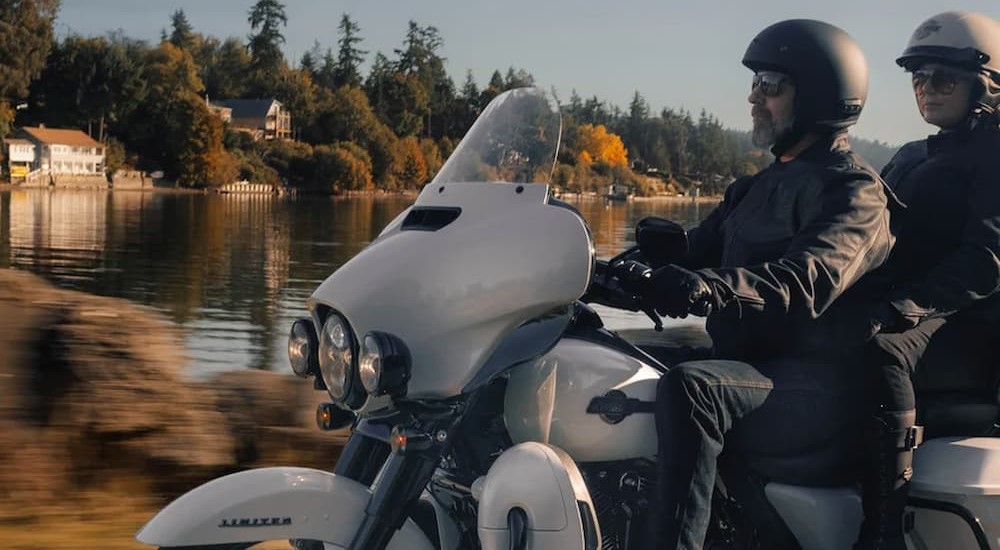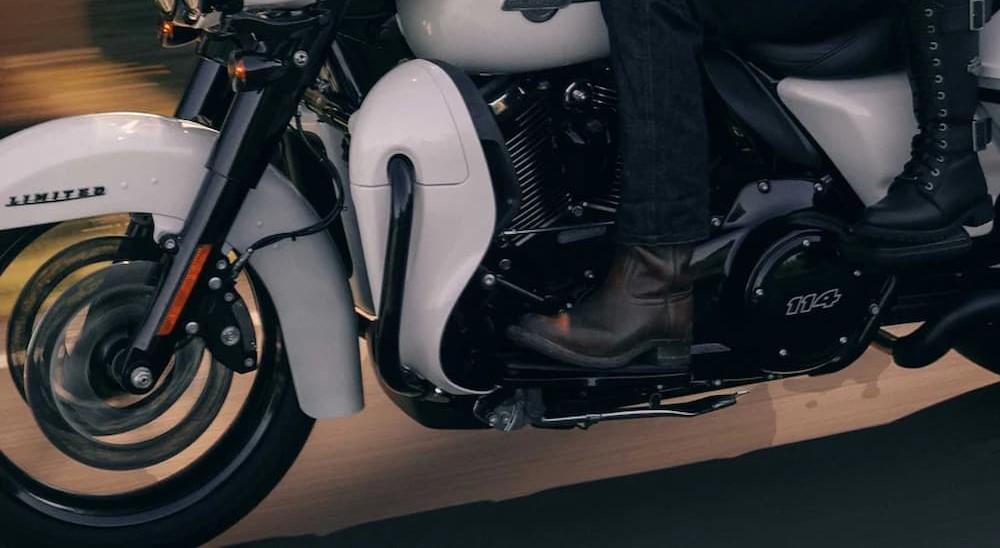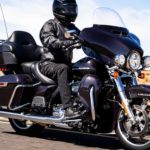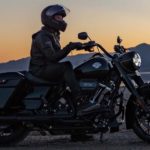With a decades-long history, the Harley-Davidson Ultra Limited is one of the most recognized modern touring bikes, not just in the U.S. but around the world. Originally a special trim on the Electra Glide that graced the road for more than 50 years, the Ultra Limited eventually developed its own identity, and Harley-Davidson officially made it a separate machine.
There are other bikes in the Harley touring lineup, including the Road Glide Limited and the Road King Special. Competing manufacturers, such as Indian and Yamaha, have also taken their shots at the throne. Yet it’s not hyperbole to say the Ultra Limited is synonymous with grand touring. When you see a Harley-Davidson Ultra Limited for sale, you’re seeing the pinnacle of luxury baggers that will get you anywhere in breathtaking style.
Of course, plenty of manufacturers have tried to take the crown. How does the Ultra Limited continue to remain on top of the grand touring world? We’re here to answer the question of why the Harley-Davidson Ultra Limited is the ultimate grand touring bike. Along the way, we’ll compare it to the Indian Roadmaster, which is widely considered its stiffest competition.
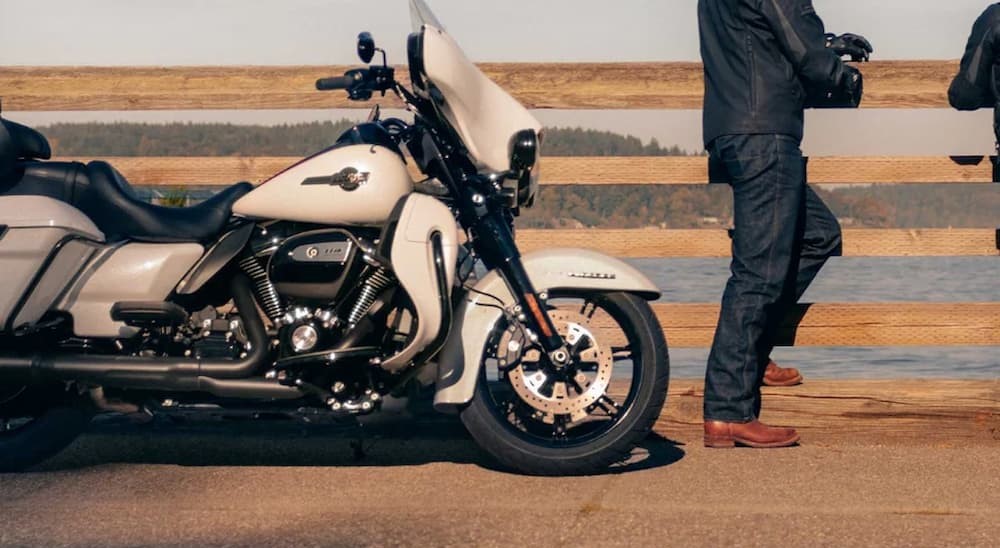
A Track Record of Getting Out There
We could start by rattling off a lot of technical specifications about the engine, size, and chassis of the Harley-Davidson Ultra Limited. But true touring aficionados know that while a motorcycle’s specs are important, a great ride has a certain aura that numbers can’t describe. The right touring bike will feel grand from the moment you wrap yourself around that steel horse and head for the highway.
The Ultra Limited has that aura. Everything about its appearance and feel, from the tall upright seat to the blackout trim, just screams “grand touring motorcycle.” It should be no surprise when you consider the bike’s history and Harley-Davidson’s greater role in the development of the bagger. The “bagger” nickname originates from the use of saddlebags on Harley-Davidson motorcycles during World War II.
The lineage of the Harley-Davidson Ultra Limited can be directly traced to the 1949 FL Hydra-Glide, which is widely considered the first touring bike. This was followed by the FLH Duo Glide in 1958, then the Electra Glide in 1965. The Electra Glide was Harley-Davidson’s first motorcycle with an electric starter, hence the “Electra” in the name. From there, many other variations came along, including the Electra Glide Ultra Classic in 1984. Now, we have the Ultra Limited as a separate model, designed to take touring bikes to the next level. When you’re riding an Ultra Limited, you’re at the controls of over 80 years of touring bike heritage.
It’s a grandness and legacy that other bike models can’t match. Take the Indian Roadmaster. Indian Motorcycle is the oldest American motorcycle manufacturer, with its roots dating to the late 1890s. While Harley-Davidson was spending the second half of the 20th century defining and redefining the touring game, the Indian brand was practically non-existent. The original company went bankrupt and ceased production in 1953. It wasn’t until 2011, when Polaris Industries acquired the brand, that it finally found its footing once again.
The Indian Roadmaster was first released one year after the standalone Ultra Limited, but there’s simply no way it can produce the same mystique. With the company having spent over 65 years in hibernation, it won’t be able to evoke the easy-riding spirit of the 1960s and 1970s. There isn’t a number or price point you can put on that kind of pedigree.
Preeminent Touring Comfort and Style
Of course, all the history and mystique in the world will only take you so far. When a rider is four hours into a ride, they’ll want a solid, comfortable bike underneath them. The Harley-Davidson Ultra Limited doesn’t rest on its reputation. This is a fully loaded touring bike that bagger newbies and veterans alike are proud to call their own.
People who demand comfort will find everything they could want on an Ultra Limited. It has ergonomic rider and passenger floorboards, plus an extended passenger backrest so your partner or buddy can relax on the road. Matching saddlebags, a luggage rack, and a Tour-Pak trunk carrier give you 4.7 cubic feet of storage space plus room for helmets. You have a batwing fairing to keep your head out of wind buffeting, and even heated handgrips for when the weather cools off.
Although the Indian Roadmaster performs admirably in several areas, such as adjustable fairing vents and separate driver and passenger heat controls, it falls short in a couple of others. There’s no passenger backrest on the stock model, so unless you spend $600 on the aftermarket mount and pad, your sidekick is more likely to ache after a long ride. The ground clearance is 5.5 inches compared to the Ultra Limited’s 5.3 inches, and it has less rake and trail than the Ultra Limited. These factors make the Roadmaster a bit less stable, especially when you consider the bike is more than two inches longer. Finally, the Roadmaster’s rider seat is a full inch lower, which will help shorter riders but make taller tourers feel cramped.
Power and Performance to Spare
Although you’ll spend a lot of time in cruising mode on the highway, baggers still need power when the situation demands it. Both the Ultra Limited and Roadmaster bring their A-game in this category. The Ultra Limited runs on the Milwaukee-Eight 114 V-Twin engine, while the Roadmaster has Indian’s Thunderstroke 116, producing roughly equal numbers for horsepower (93 for the Ultra Limited, 92 for the Roadmaster) and lb-ft of torque (122 for the Harley-Davidson, 126 for the Indian). Both bikes weigh just over 900 pounds and have similar gear ratios to give you good low-end pull and a little top-end pop.
The technology options on each are solid as well, with electronic cruise control, anti-lock brakes, LED lights, and premium infotainment systems coming standard. Both have multiple riding modes based on the terrain and aluminum wheels for lightweight strength. The air-adjustable rear shocks are another way they offer high-performance comfort.
Still, the Ultra Limited manages to separate itself from the Roadmaster in a few key categories. Not only is its fuel economy of 40.9 MPG five higher than the Roadmaster’s 35.9, but the six-gallon tank is a half-gallon larger than the 5.5 tank on the Indian. That adds up to almost 50 additional miles between fill-ups, meaning less time standing around at gas stations and more time riding. Also, while the Ultra Limited has four-piston brake calipers in the front and rear, the Roadmaster has four pistons in the front and two pistons in the rear. That means less stopping power, which could be a safety factor.
Then there’s the front suspension. The Ultra Limited has a dual bending valve, while the Roadmaster has a telescoping fork. Although this fork can help with aerodynamics a bit, they’re known to be more difficult to handle at high speeds and going up hills, and they require more maintenance. Conversely, the dual bending valve design improves ride smoothness in all conditions and makes the shock damping more even. The rear shock can also be adjusted in seconds by turning a pre-loaded knob.
A Bike That’s Made for the Journey
Riders are searching for a specific DNA in touring motorcycles. While sportbikes are for experiencing a thrill per minute, and cruisers are for feeling a rush during everyday commutes, a touring bike is the best way to explore American highways and byways. As such, these motorcycles need to be comfortable for long periods, and they need to evoke the sense of freedom that comes with getting away from it all.
Whether you’re talking about logic or feeling, the Harley-Davidson Ultra Limited continues to be the standard-bearer for touring on the grandest scale. It’s a clear leader on key performance and style features while doing more than enough in every other area. As we said before, there’s no matching the aura of conquering the interstate on an authentic Harley-Davidson.
